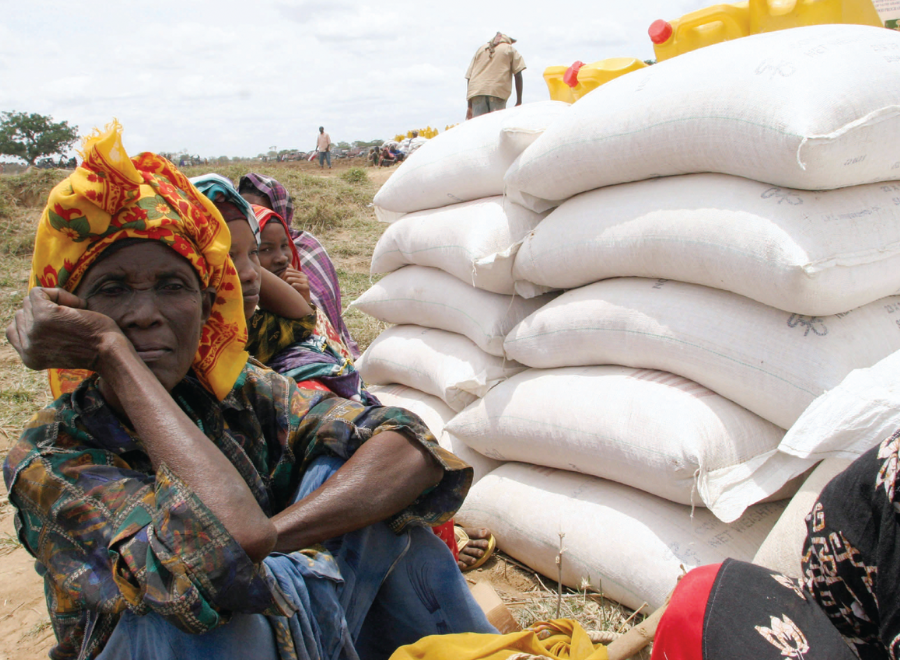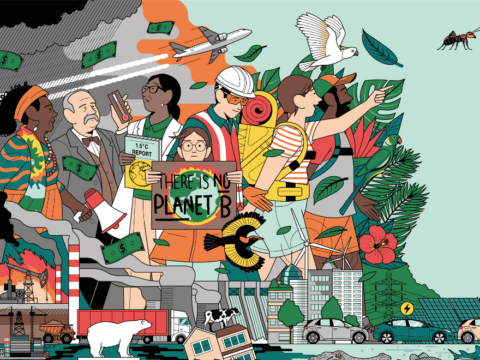Last summer, on a southern Ontario side road, I watched a combine load a streaming harvest of golden winter wheat into a waiting transport truck and wondered whether the world food crisis was illusion or reality.
Yet, months earlier, amid spiking food prices and tightening supplies, India, Vietnam and Egypt banned rice exports. Food riots broke out among the hungry from Mexico to Uzbekistan. Individuals and governments hoarded what they could. Debates flared over the use of corn to make fuel. The European Union, World Bank and United Nations rushed to find solutions, and the UN’s Food and Agriculture Organization (FAO) held an emergency meeting in Rome. Wealthy countries pumped more money into food aid to feed those who could no longer afford to feed themselves.
But surely a “global threat” containing elements such as “mass hunger” and “world food shortage” can’t be solved that quickly.
In fact, last spring’s crisis was likely the first high-profile public appearance of what could become a chronic problem — less a disease than the symptom of a coming epidemic. Hunger in developing countries can be addressed in the short term. Long-term solutions are harder. Ironically, some victims of last spring’s food crisis are also the most likely to provide answers to the global food supply question. And higher food prices, which pushed food into the public eye, may be part of the solution.
A SITUATION ROOTED IN PETRO-POLITICS, commodity trading, hedge funds, land use, productivity and the demand for pork shanks in Shanghai, the global food system must first be understood. For starters, the world is not running out of staple foods, but it does have much less on hand.
Our planet now has less than a 60-day supply of grain — down from 140 days a decade ago. In open markets, decreased supply means higher prices. Bio-fuels, helping countries cut their dependence on foreign oil, also take some of the blame. A World Bank report leaked last July says bio-fuels account for 75 percent of the rise in world corn and wheat prices since 2002.
The report rings true, since the United States uses about a third of its corn crop to produce ethanol, the European Union uses half of its vegetable oil crop for bio-diesel and Australia is mandating 10 percent ethanol fuel by 2010. New ethanol technologies, which use organic matter other than corn or grains, may ease the pressure on food. But the demand is still likely to remain in the short term.
China’s growing economy and massive population are also factors. As incomes rise, so does meat consumption; China’s demand for meat has doubled in the last 12 years. Because it takes about five kilograms of grain to put one kilogram of meat on the table, China’s demand for grain is also soaring.
Finally, the workings of the global marketplace accelerate the grain-price increase. For starters, although most staple foods are produced and consumed locally, it’s the global marketplace that ultimately determines their price. Only 10 to 15 percent of wheat, for example, hits the world import-export market. But it’s this market that sets both global and local prices. Secondly, hedge funds have recently been betting heavily on rising food prices — and winning. Wheat and corn futures now trade alongside commodities such as oil and gold.
MY OWN TRAVELS to hungry regions of the world have taught me that anyone with enough money can always find food, almost anywhere. The hungry of the world are the poor. They numbered about 850 million last fall, but hikes in food prices have added another 50 to 100 million. Ironically, many of them are among the estimated 1.5 billion small-holding farmers who produce about half of the world’s food.
The average Canadian farmer working hundreds or thousands of hectares with expensive machinery grows enough food to feed more than 100 people, but an African farmer working with human labour on one hectare struggles to grow and sell enough to feed, clothe and educate a family of 10.
The world’s small farmers can emerge from poverty, but only with global will and a good plan. In his latest book, Common Wealth, American economist Jeffrey Sachs says the world’s population is now half rural and half urban — and on track to becoming 60 percent urban in 25 years.
To survive a population shift without leaving almost a billion people in extreme poverty and hunger, wealthy countries must help poor nations break out of what Sachs calls “the poverty trap.” His plan requires first-world investments in agriculture, health, education and infrastructure. “The first is a boost to productivity of the core livelihood, agriculture. This is the hallowed Green Revolution that initially lifts small-holder farmers out of subsistence.”
The UN Millennium Project, led by Sachs, is putting some of his theories to the test. Three model villages in Africa receive $50 per villager annually for improvement in the four suggested areas. With fertilizers and improved seed, farm yields soared during the first two years. Sachs says taking his plan to 500 million rural Africans would cost $25 billion a year — half of the anti-poverty aid promised (but not yet delivered) by the G-8 group of developed countries. Says Sachs, “If the powerful countries follow through on their commitments, we could make decisive progress against extreme poverty in a very short period of time.”
Last spring’s food crisis, or food price crisis, at least made many more people, governments and agencies aware that farmers hold the key to a peaceful future. As the spring emergency moved into early summer meetings, the UN accelerated a $200-million fund for small farmers, and the World Bank’s Food Crisis Response Programme promised an additional $1.2 billion in support for food “safety nets” and agriculture.
China’s and India’s examples prove that increased production for small-holding farmers can lead countries out of poverty. The Asian giants still have plenty of ecological and social problems, but they are feeding their people and competing with the industrialized world. Indian and Chinese farmers, with holdings averaging 1.4 and 0.4 hectares respectively, are mostly weaned from food aid and are reaping the rewards of larger agricultural economies. In both cases, true to Sachs’s theory, investment in agricultural research, irrigation, seeds, fertilizers and infrastructure worked alongside education to create foundations for development and participation in the world economy.
JUST DON’T EXPECT EVERYONE TO AGREE on exactly how small-holding farmers should go about producing more food and rising out of poverty. Sachs’s proposal includes fertilizers and high-yield seeds developed by corporate agribusiness in developed countries. Some argue that this model would only strengthen the first world’s corporate control over agriculture and economies.
Grassroots farmers’ groups favour “food sovereignty,” or local control of food, and small-holder agriculture that relies less on external inputs (and exports) and more on locally available solutions.
Grassroots approaches to food production in dry climates are showing promise. One is the Conservation Farming program of Christian Care Zimbabwe, supported by The United Church of Canada through the Mission and Service Fund and through the Canadian Foodgrains Bank. About 75 percent of the impoverished country’s population lives off agriculture, and at least 30 percent of them need food aid.
New conservation methods call for farmers to stop plowing, conserve water, sow nitrogen-fixing plants, practise intercropping, spread manure for fertilizer, and mulch for moisture and to control weeds. Christian Care suspended its programs in Zimbabwe amid recent election and post-election turmoil. The simple farming techniques, though, are still boosting yields and spreading from neighbour to neighbour by word of mouth.
On the global research scene, there are dozens of agencies trying to find better ways for small farmers to feed themselves. In Canada, the Foodgrains Bank wants the government to make sustainable agriculture a development emphasis and is asking supporters to help with lobbying. Rising grain prices can actually help farmers around the world, but not if their input costs rise faster than their profits.
“If you don’t supply sustainable livelihoods for the large number of poor and hungry who are involved in agriculture, it doesn’t matter how much you produce, you are not going to do anything about hungry people,” says Stuart Clark, a Canadian Foodgrains Bank senior policy analyst, who attended the FAO’s emergency summit in Rome last June. “You’re only going to end hunger if you make sure there is more food produced and the people who need the food have a way of obtaining it.”
It’s difficult to get your arms around the world food crisis, but the bottom line is easy to grasp. Speculation aside, farmers need a good return on their crops, so higher prices are not all bad. But farmers in developing countries need improved production, too. We need to treat our neighbours around the world as ourselves. And we must share what resources we have with the poor. Simple ideas that Christians should understand.
***
This story first appeared in The United Church Observer’s October 2008 issue with the title “An epidemic of hunger.”















